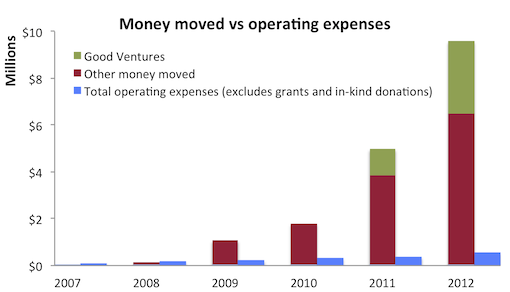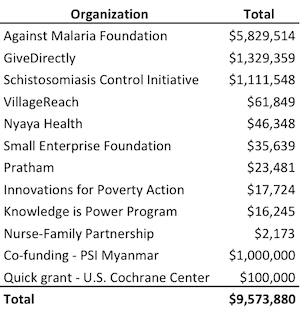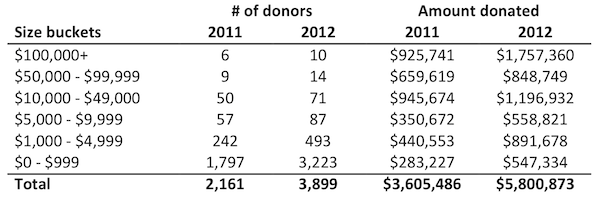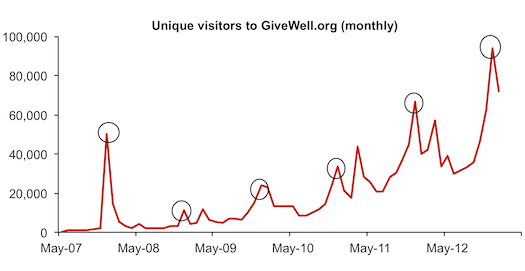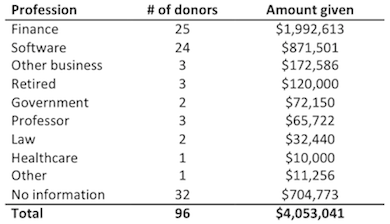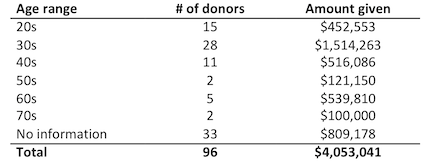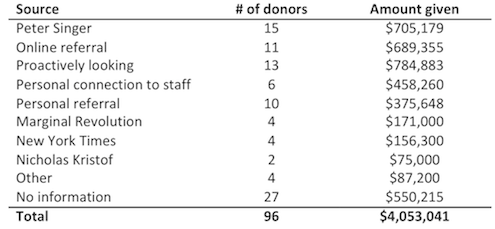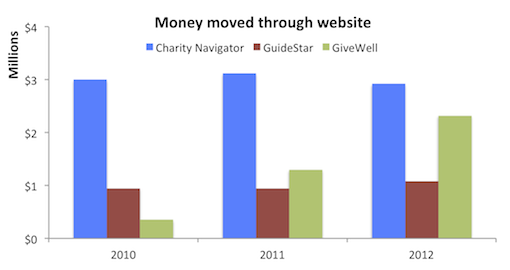One purpose of this blog is to be explicit about some of the deep value judgments and worldviews that underlie our analysis and recommendations. As we raise the priority of expanding our research into new causes, this seems like a good time to lay out some of the things we believe – and some of the things we’re unsure about – on topics that could be of fundamental importance for the question of where to give.
In general, the below statements broadly describe the values of the GiveWell staff who have final say over our research. There may be cases in which different individuals would give different levels of weight/confidence to the various statements than I have, but at a high level we expect these statements to be a reasonably good guide to the values underlying GiveWell’s research.
Values
We don’t believe it would be productive to try to produce a complete explicit characterization of the fundamental values that guide our giving recommendations, but we think it’s worth noting some things about them.
- We are global humanitarians, believing that human lives have equal intrinsic value regardless of nationality, ethnicity, etc. We do believe there may be cases where helping some people will create more positive indirect effects than helping others (for example, I stated in 2009 that I preferred helping people in urban areas for this reason, though this represents my view and not necessarily the view of others at GiveWell). However, we do not agree with the principle that “giving begins at home”: we do not assign more moral importance to people in our communities and in our country than to others.
- The primary things we value are reducing suffering and tragic death and improving humans’ control over their lives and self-actualization.
We also place value on reducing animals’ suffering, though substantially less than on human suffering.We also place value on reducing animals’ suffering, though our guess is that the type of suffering animals experience is of a kind that we would not weigh as heavily as the type of suffering that humans experience. (We do not have clear consensus views on how to weigh these things against each other.) This bullet point edited for clarity on Sep. 5, 2013. - We do not put strong weight on “achievements” (artistic endeavors, space exploration, etc.) as ends in themselves, though these may contribute to the things we do value (details above). We also don’t put strong weight on things like “justice,” “equality,” “fairness,” etc. as ends in themselves (though again, these may contribute to the things we do value).
- We are broadly consequentialist: we value actions according to their consequences.
- We are operating broadly in an “expected value” framework; we are seeking to “accomplish as much good as possible in expectation,” not to “ensure that we do no harm” or “maximize the chance that we do some good.”
There are many questions that we do not have internal consensus on, or are individually unsure of the answers to, such as
- How should one value increasing empowerment vs. reducing suffering vs. averting deaths?
- How should one value
animal suffering in comparison to human sufferinghelping animals in comparison to helping humans? This line edited for clarity on Sep. 5, 2013. - Is it better to bring someone’s quality of life from “extremely poor” to “poor” or from “good” to “extremely good?”
- Is creating a new life a good thing? Can it be a bad thing? How “desirable” or “undesirable” must the life be for its creation to count as a good/bad thing? Should we value “allowing future lives to exist that would never come into existence otherwise” similarly to “lives saved?”
- Is it better to save the life of a five-year-old or fifteen-year-old?
We don’t believe it is practically possible to come to confident views on these sorts of questions. We also aren’t convinced it is necessary. We haven’t encountered situations in which further thought on these questions would be likely to dramatically change our giving recommendations. When we have noticed a dependency, we’ve highlighted it and encouraged donors to draw their own conclusions.
Worldview
We view the questions in the previous section as being largely “fundamental,” in that empirical inquiry seems unlikely to shift one’s views on them. By contrast, this section discusses views we have that largely come down to empirical beliefs about the world, but are very wide-ranging in their consequences (and thus in their predictions).
There are two broad worldview characteristics that seem, so far, to lie at the heart of many of our disagreements with others who have similar values.
1. We are relatively skeptical. When a claim is made that a giving opportunity can have high impact, our default reaction is to doubt the claim, even when we don’t immediately see a specific reason to do so. We believe (based partly on our experiences investigating charities) that most claims become less impressive on further scrutiny (and the more impressive they appear initially, the steeper the adjustment that happens on further scrutiny). As a result, we tend to believe that we will accomplish more good by recommending giving opportunities we understand relatively well than by recommending giving opportunities that we understand poorly and look more impressive from a distance.
We have written about this aspect of our worldview previously, and have done some rudimentary work on formalizing its consequences:
- A Conflict of Bayesian Priors? lays out the basic fact that we have a skeptical prior (by default, we expect that a strong claim will not hold up to scrutiny).
- Why We Can’t Take Expected-Value Estimates Literally does some basic formalization of this aspect of worldview and explores some of the consequences, defending our general preference for giving where we have strong evidence that donations can do a lot of good rather than where we have weak evidence that donations can do far more good. It also explains why we put only limited weight on formal, explicit calculations of “expected lives saved” and similar metrics.
- Maximizing cost-effectiveness via critical inquiry expands on this framework, laying out how it can be vital to understand a giving opportunity “from multiple angles.”
- We will likely post more in the future on this topic.
2. We believe that further economic development, and general human empowerment, is likely to be substantially net positive, and that it is likely to lead to improvement on many dimensions in unexpected ways. This is a view we haven’t written about before, and it has strong implications for what causes to investigate. While we see great value in directly helping the poorest of the poor, we’re also open to the viewpoint that contributing to general economic development may have substantial benefits for the poorest of the poor (and for the rest of the world). And while we are open to arguments that particular issues (such as climate change) are particularly important to the future of humanity, we also believe that by default, we should expect contributions to economic development and human empowerment to be positive for the future of humanity; we don’t feel that one must necessarily choose between improving lives in the short and long term. (This view is part of why we put more weight on helping humans than on helping animals.)
Because of this view, we are open to outstanding giving opportunities across a wide variety of causes; we aren’t convinced that the best opportunities must be in developing-world aid, or mitigation of global catastrophic risks, or any other particular area. Even if a particular problem is, in some sense, the “most important,” it may be possible to accomplish more good by working in another cause where there is better room for more funding. We will discuss this view more in a future post.

